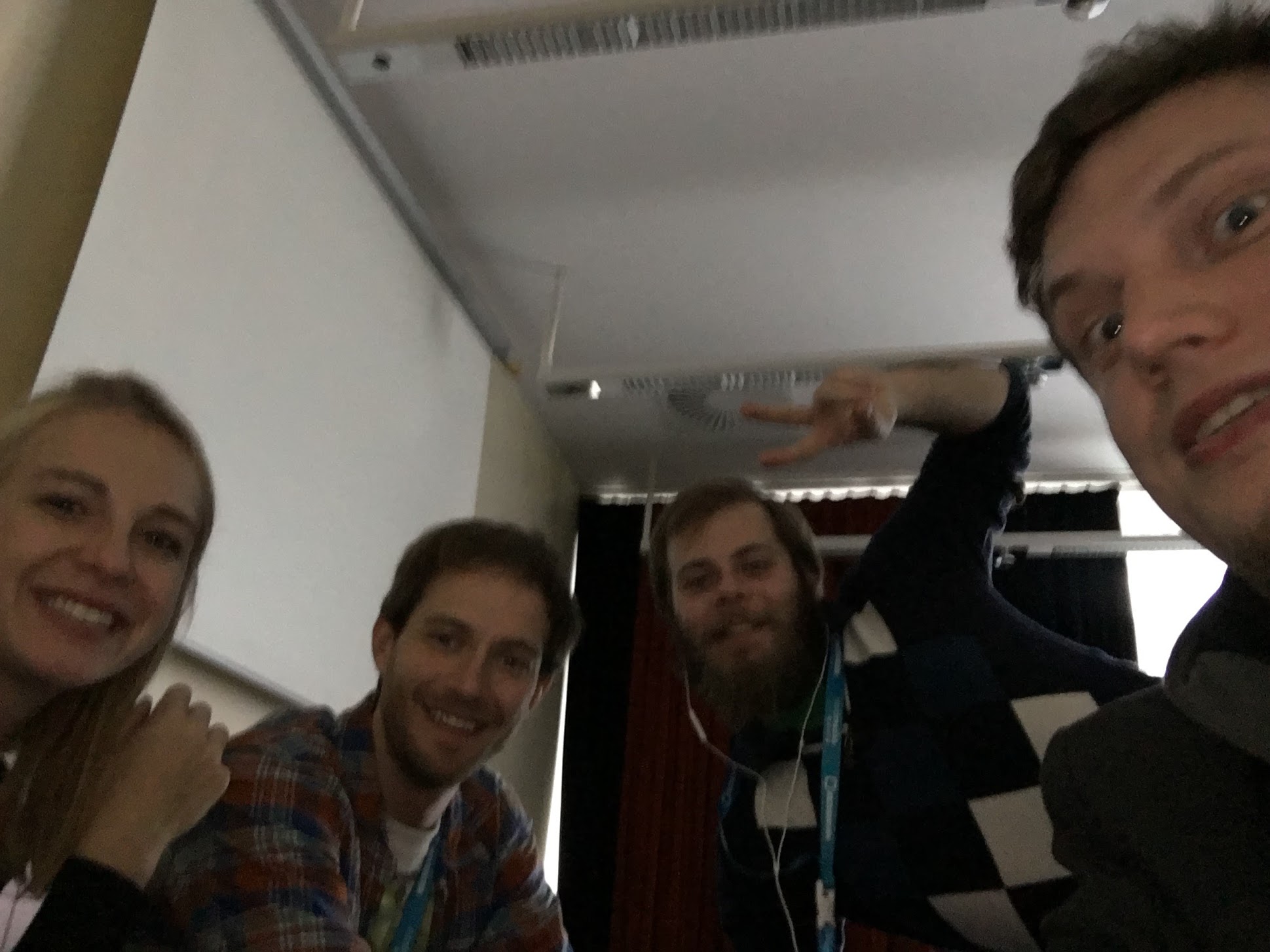During Hackvention 2016 we had a chance to discuss the pressing matter of wireless VR with people who know the struggle behind it: Nicole Laux from XMG and Dominic Eskofier from NVIDIA.
Nicole Laux is the marketing manager at XMG, with particular focus on VR. XMG (Xtreme Multimedia and Gaming) is a provider of high end laptops and desktops, but most importantly of all, Walker – the first commercially available VR Backpack.
Dominic Eskofier is the head of VR for NVIDIA in Europe and few other regions. He started in games business doing magazines and websites for Computec Media GmbH. During his next job at Rockstar Games he fell in love with modern VR (Rockstar Games was not the reason for him to do VR) and he opened his own startup – Realities.io. As already mentioned, he is now heading up the VR business for Nvidia in the EMEAI region..
Both Nicole and Dominic have a vested interest in wireless VR, because of the VR Backpack trend on the one side, and graphical performance limitations on the other.
“I personally think that there will always be a use case for a tethered device. Because at some point you not only drive a full HD display over wireless, but you are going 2K, 4K, 8K.” Dominic Eskofier said.

Episode Preview
In this episode we have discussed a long list of topics, all connected to why wireless is important, how it is going to change more than just the VR ecosystem, and, most importantly, why it is not a solution for everything. For more show notes, links, and the list of discussed topics, check out this episode website.
For one, why do we want to get rid of cable in the first place? While we usually start the discussion from the point about our own comfort and a feeling of freedom, there are some use cases that cannot work with a cable. Among them we have VR for therapy and elderly people. Many times people with chronic back pain or simply past a certain age have significant difficulty raising their legs. To that, elderly people have much higher awareness of the things they could trip over, and that includes a cable. In the end, the whole experience is by far diminished, since these users focus on their own safety.
“It doesn’t really help if somebody is walking behind you and carrying you on the leash. It wouldn’t help at all,” said Nicole Laux.
Now, wireless could be a solution to this and many other issues, but is it really solving anything? If we look at the technology behind the TPCAST, we can see that it has concerns around occlusion and range. The receiver should be close and in direct line of sight to the sender, which in the end presents high occlusion risk.
Discover more thoughts on wireless VR, such as it’s influence on fashion, R&D technologies, VR Fitness and more in our podcast episode Episode 26 – Is Wireless VR Really The Solution?


























